US Fish & Wildlife Service will be soliciting public input regarding management of cormorants
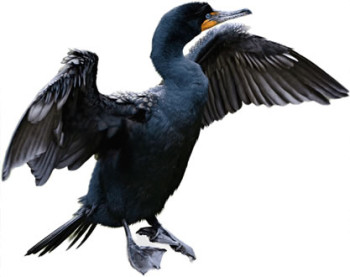
The fishing public may finally get some relief from the Federal government, in regards to the double crested cormorant. Cormorants are migrating fish eating sea birds that have been around the Great lakes area en mass since the early 1970s. Cormorants are dark in color, have a wide wing span, a long bill (beak) and reportedly eat about 500 grams of fish per day individually. They colonize in areas and fan out daily about 20 miles from the colony core and eat. In concentrated numbers, their feces, called guano, is so acidic it will kill all plantlife.,, The deadline for commentary is March 9. >click to read< 07:43

































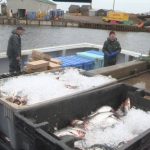
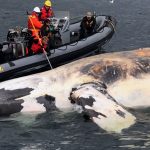
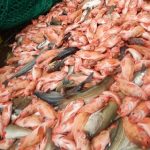


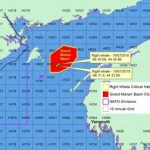

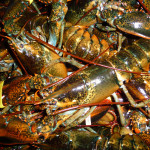



Open season on them. Shoot each one they kill more fish than nets do any day . They’ve got to be controlled because where I’m at SE NC they are here by the 100 k and more everywhere. Seen them kill red drum pretty eat all the grey trout in the winter here . Use to catch 100 of them a day 20 years ago. Now all gone and it’s not fishing that wiped them out .
Why does it take public comment this should have been done a long time ago I know no common sense in game management and just like the rest of the government
PUT A BOUNTY ON THEM..
They definitely need to be thinned out. I’ve seen acres of them sitting on the beaches, also in the sounds and ocean from the Caroilnas to the Florida Keys.
The Fishermen of New England have been trying to get a control put on them for years. They numbers are so great, on salt and fresh water, is unbelievable.
They eat nothing but fish and new shell lobsters and crabs.
I do not recall seeing the Cormorant in the upper Chesapeake bay as a kid (40 years ago). Now, I see flocks of them like Canadian geese. There are at least two diving and swimming within eye shot of my pier at all times. I just saw hundreds of them drying their wings on the Chesapeake bay bridge on Saturday 2/22. I believe they need to be managed.
Open season on cormorants is necc! Their numbers are increasing way too fast. They not only are helping destroy some of our fisheries, they are also becoming an issue with water quality in our local ponds with all the feces they produce, especially in a roosting/nesting area.
They need to be controlled, I can’t believe how much damage their poop does. The Ct River has a huge rock that used to be very dark in color and smooth, they roost on this rock, and now the rock is white and pitted from the droppings….no living plants near its base any longer…..I thought someone whitewashed it…we see hundreds from Windsor to Enfield Ct….They need to be culled..Big Time!
I would request a season on them They need to be thinned out. 25-50 a person would not hurt the population a bit I know places where we fish that between them and the spraying have destroyed fishing grounds
Control the Nets not the birds maybe if we cared more about Fisheries we would not have the problem Do Not Allow killing of this species. Do you job and conserve
Open season on them. There is flocks of thousand during our duck season.
I am all for population control I have seen for myself the destruction these creatures can cause on farm raised catfish ponds as well as private and public fishing lakes and ponds
THEY ARE DESTROYING THE FISH , PUT A SEASON ON THEM NO LIMIT
I live in northern ohio, throughout the summer and fall there is thousands on the banks of lake erie. I have seen small island that have died because of the feces of these things. They need thinned out it!!! This will also help with the perch and lake shinner population.
They’re annihilating fisheries all over the U.S. Those of us trying to manage small ponds and strip pits can have years of work and thousands of dollars of investment wiped out in just a few day. Please help control their numbers!
OPEN SEASON, ASAP
They are awefu! I live in North Dakota and they can decimate fish populations in lakes here and thus damaging the ecosystem of these bodies of water. They absolutely need to be thinned out. It’s nothing to have hundreds of them in one place at a given time.
These birds are destroying the white and yellow perch population as well as anything else they happen to pass by in the Chesapeake Bay. I have seen hundreds of them in the tributaries, gorging themselves on the spawning fish and the spawn. They are out of control and in dire need of regulation changes.
These pest have got to be dealt with not only do they decimate fish populations but they crap on everything with friken pin point accuracy
Yes they need to be controlled. There are entirely to many around.
Central Texas by the thousands. More cormorants and seagulls than geese and ducks. It’s ridiculous.
They need to be managed in some way or another. They are invasive and have negative impacts on fisheries all over the country. They also can be harmful to vegetation and kill entire islands on lakes.
[…] called guano, is so acidic it will kill all plantlife.,, The deadline for commentary is March 9. US Fish & Wildlife Service will be soliciting public input regarding management of cormorants ? … I've spent most of my money on Waterfowling, Women and Whiskey. The rest of my money […]
We need to manage their numbers. It’s proven that they are eating game fish at a high rate on Santee Cooper. Not to mention the negative impact on water quality. They are a nuisance in high numbers and should be treated as such.
they seem to be every where here in western pa. the ohio river, pymatuning lake , shenango res. lake Arthur , just every place anymore, pymatuning has rafts in the 700 to 800 birds and multiple rafts
I would like to see some kind of season on them. The susquehanna river in my area is struggling very bad and these things are all over eating the few fish we have.
Open it up! I believe in Canada they may have just opened it. Alot of damage they do.
We’ve been needing a season opened on them for a while now. They’re all over the south MS gulf coast area and need to be thinned out! Open a season on them!
They’ve destroyed more islands on my home lake than anything else. Massive roosts with toxic droppings. Kills everything in a short time.
Besides eating their weight plus in fish, their roost stink for miles on the lake.
Open season reduce the numbers.they must be managed just like all other animals
Open a season on them. There are thousands on the Chesapeake bay and its tributaries. They were hardly any around when I started waterfowl hunting 35 years ago now the are everywhere.
Please open a season on them here in Alabama. Thousands upon thousands of them at a time will occupy sloughs here on the Alabama River and will completely devastate the fishery. Their roosting spots may be the biggest issue. I’ve seen acres of native plant species wiped out from them roosting on isolated islands in the middle of the river/sloughs along the Alabama and Tombigbee Rivers. Something needs to be done!
The Chesapeake Bay is loaded with them. They are stacked up on piers and the bay bridge everyday. See large groups of them all the time while waterfowling. Would love to see a season on them
Put out an open season on them. They are terrible here in Houston tx. I’ve watched hundreds of them work over golf course ponds decimating them.
It is imperative that we allow these birds to be managed. I would suggest an open season in Feb for NW Florida with collection sites for the carcasses placed throughout the county. Charge $5 for the seasonal permit, and require all downed birds be harvested and turned into a collection site for data recording and to avoid having the waterways littered with carcasses.
Personally I see hundreds of them every day I live on the shore in forked river they are quite literally everywhere, I think we as a state could certainly benefit from 1-2 bird per person per day harvest.
Mississippi River in Winona Minnesota is full of them hundreds to thousands roosting in the trees on the islands. No wonder the walleye fishing is poor here now. They need an open hunting season on them.
Wayyyy to many EVERYWHERE in south la must be slowed down
They are decimating local ponds and lakes around the Chesapeake and at the least damaging ecosystems unchecked. I would think an assessment and limit for reducing their numbers would be appropriate given the research to date.
I work at a lock and dam and it has amazed me the number of fish I have watched these glutinous birds gobble up. They need controlled in a bad way. Open up a very liberal season on these birds and get the population under control.
They are on the lower Susquhanna by the thousands, feasting on an already struggling fish population
These must be controlled just as any other Predator. If left un-checked they will and have started the decline of the populations of fish and other species. They not only eat fish but also Migratory young of other species of waterfowl. The time is now and not 15 yrs from now as in the case of CWD that the Government causes as the results of their studies on CWD and the Elk they released in Colorado and has now spread Nation Wide and has cost Millions of Dollars at the expense of Sportmen and Wildlife.
I have been hunting an area on the Mississippi in MN since I was 18 the first year we never saw theses birds. Now 16 years later there are thousands of these birds in the area I hunt. I have notice a decline in the number of puddle duck using the area and even the Canadian geese have started to thin out. I do believe there should be a season on these birds. Control the population much like we do with almost all the other waterfowl species.
There’s to many of them ruining our waters and surrounding land. Unlimited year round season.
I live on eagle lake Vicksburg Ms no to count thousands winter here every year unbelievable numbers no way this can be good for any lake you catch 1.5 crappie they have caught and couldn’t handle
They need to be regulated. What they don’t eat they make a mark on the fish which they may or may not recover from. They are especially damaging during the spawn. In Louisiana they are everywhere!
I’m seeing the perch population as well as other fish on Lake Champlain on a downward slide. These birds are here by the thousands. I had one day while hunting geese where I watched a flock of cormorants fly by in a line that stretched along a quarter mile road. The population is way too high and something needs to be done.
The Mississippi River delta is over run with cormorant, they put major pressure on the oxbow lakes surrounding the river and severely hurt the fisheries. Especially post spawn months when juvenile bass and catfish are attempting to restock the struggling lakes.
Our greed and ignorance is WAY more a problem for Fish numbers than is Cormorants
If you spend anytime on the water it is clear they are over populated and one has to wonder why they’ve allowed to get where they are unchecked. They’ll be good fertilizer for food plots. The population needs to be cut drastically.
If the government needs evidence of how destructive they are I’d like to point them to Pigeon Lake near Dassel, MN. The cormorants have completely taken over the lake and the whole area around it. There are 3 islands on pigeon, one of which was nested and is completely baron now. All plantlife is dead and if you go to it you’ll see nothing but rotting corpses and bones of dead cormorants and pelicans. They’ve since moved to the middle island and all the plantlife is dead, but trees are still mostly standing so they keep nesting on it. A couple years ago they started nesting on the east island. Within a decade they’ll have that island dead as well. They’ve eaten pretty much all the fish in pigeon and have done a number on the surrounding lakes. Duck migrations are moving away from the area more every year because of the resource competition. It’s a depressing sight every time I drive by. If whoever reads this wants pictures I’ll be happy to launch the boat once the ice is off this spring.
Like always, a day late and a dollar short……always wait until it is critical. This should have been done years ago.
No need for a hunt. Destroy the eggs. Reduce the population. Something needs to be done to thin the flocks. They are totally out of control.